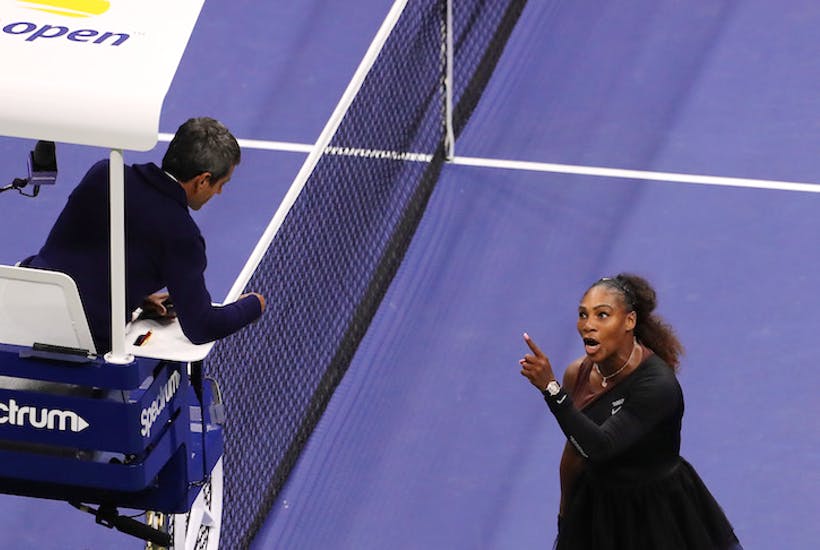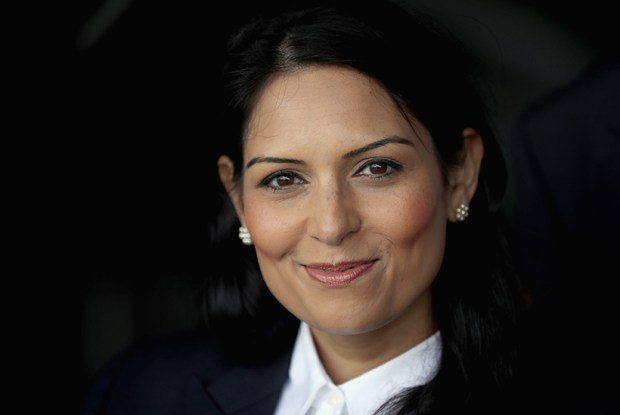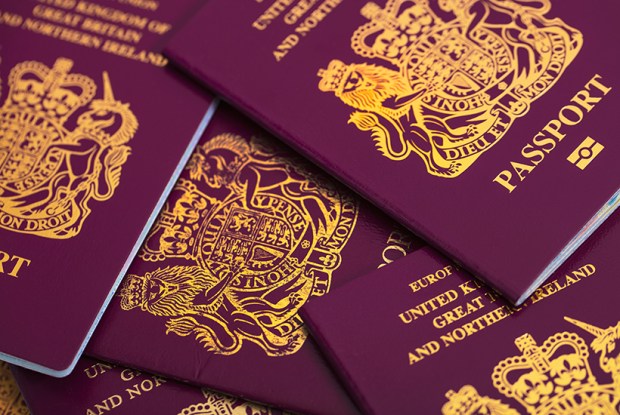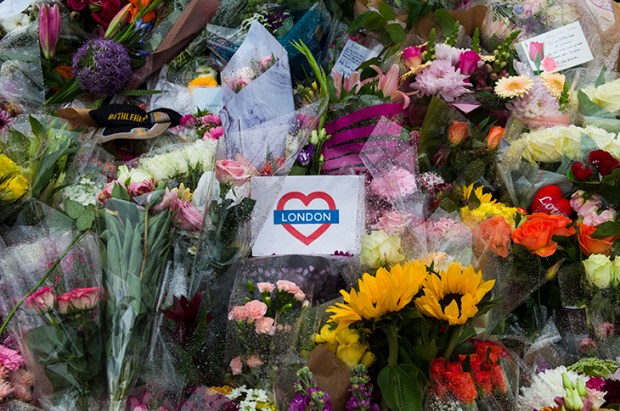I have spent the morning trying to draw a cartoon of a black person without it being racist. It’s bloody difficult. Especially the lips. Make them too big and anti-racist people will accuse you of being a white supremacist peddling, in their words, the old ‘sambo’ myth. But too small and they don’t look like the lips of very many black people. It’s the same with the colour. At first, on my cartoon, I used a black felt-tip pen and so the figure came out very black indeed. Sambo territory again, especially when I added big red lips and very white teeth. In the end I used cross-hatching with a pencil but this was, to my mind, unsatisfactory.
The job of a cartoonist is to exaggerate physical characteristics into an immediately recognisable caricature for comic effect, not to assuage people with skin as thin as the surface tension of water. My little drawing was the consequence of the furore which enveloped an Australian cartoonist, Mark Knight, who works for the Melbourne Herald Sun. He had produced a very funny cartoon of the perhaps inaptly named tennis player Serena Williams having a temper tantrum on court, and was immediately accused by the National Association of Black Journalists of having drawn a ‘sambo-like’ cartoon. The drawing was criticised by civil rights leaders, J.K. Rowling, Jesse Jackson, the entire staff of the Guardian (which ran a magnificently fatuous piece explaining that this was why Australia was a racist society) and the usual gimps on social media.
Mr Knight, rather wonderfully, refused to apologise and so did his newspaper. But I suspect that nonetheless he fretted a little over how to draw a cartoon of a black person without the social justice warriors suffering a collective aneurysm. ‘Best not to draw them at all’ may be the conclusion reached by some white cartoonists — and indeed, I can’t remember seeing many black faces in the cartoons in this publication. But then there is almost certainly a government-funded body somewhere which has done a study of cartoons and found that black people are under-represented in them and that newspaper and magazine editors should perhaps apply a quota to ‘reflect in all line drawings and illustrations the vibrant diversity of modern Britain’ but adding the rider that caricatures of black and ethnic minority people should ‘in so far as is possible reflect the positive contributions these people have brought to our society’. It is a fraught area, then.
Serena’s strop was also co-opted into the culture wars long before Mark Knight got out his black felt-tip pen. I have to say I found nothing terribly shocking in her behaviour — it reminded me a little of my reaction when my father beat me 21-4 at table tennis when I was nine years old. If I could have channelled that intense loathing, fury, resentment, bitterness and frustration into my game I might have become a table tennis player of some repute.
Serena Williams does not like losing and her anti-pathy to defeat is one reason she is such a successful player. Paddies like hers are always a good laugh, but they are hardly unique in the world of tennis or in any other competitive sport. What rankled was the speed with which Serena clambered into acquired victimhood to explain it all away, wreathed in self-pity and blaming her hormones.
And then the SJW crowd got itself involved, with one halfwit called Carys Afoko in the Guardian (natch, again) suggesting that this was what all black people had to put up with all the time, everywhere, because this is whitey’s world. ‘Black women aren’t allowed a bad day at the office. Or to be precise, if we have a bad day we can’t usually risk expressing anger or sadness about it,’ the idiot wrote. Hell, I didn’t know the Guardian staff were so racist to their black writers. In future, Carys, if you have a bad day at the Guardian, just confide in Owen Jones and he’ll assure you it’s all the fault of the Zionists.
I wonder if Boris Johnson has ever drawn a cartoon of a black person? If so, it will almost certainly be in the dossier which definitely hasn’t been compiled by Theresa May’s increasingly desperate backroom team of inept thugs in order to discredit the man. The problem for our Prime Minister is that nothing I’ve seen in this dossier would remotely harm Johnson’s standing in the eyes of the people. At least three quotes made me like him once again, having gone off him for his performance over the past two years.
The first was about China ‘…where coolies sit in expectorating rows, nourished on nothing but rice and the spleens of pangolins’. That’s a very humorous image, especially the pangolin bit, and — to put it in context — was a lampooning of our attitudes towards China, as a previous sentence made clear. But you can’t get away with nuance or wit these days if you’re a politician.
The second quote might also have been the parodying of a prevalent attitude — I don’t have the context — but I sincerely hope it wasn’t. It was about Africa: ‘The continent may be a blot, but it is not a blot upon our conscience. The problem is not that we were once in charge, but that we are not in charge any more.’ This seems to be both incontestable and yet paradoxically unsayable, as so many difficult things are these days. If only Boris would say it in public.
And finally Portsmouth: ‘Full of drugs, obesity, underachievement and Labour MPs.’ Well, again — he’s not wrong, is he?
The people who compiled that dossier clearly feel that the public is as averse to politicians telling the truth as they are. Whereas recent election results in Europe and America suggest the precise opposite. Boris could use half of that dossier as his manifesto, and sweep home to victory.
Got something to add? Join the discussion and comment below.
Get 10 issues for just $10
Subscribe to The Spectator Australia today for the next 10 magazine issues, plus full online access, for just $10.
You might disagree with half of it, but you’ll enjoy reading all of it. Try your first month for free, then just $2 a week for the remainder of your first year.















Comments
Don't miss out
Join the conversation with other Spectator Australia readers. Subscribe to leave a comment.
SUBSCRIBEAlready a subscriber? Log in